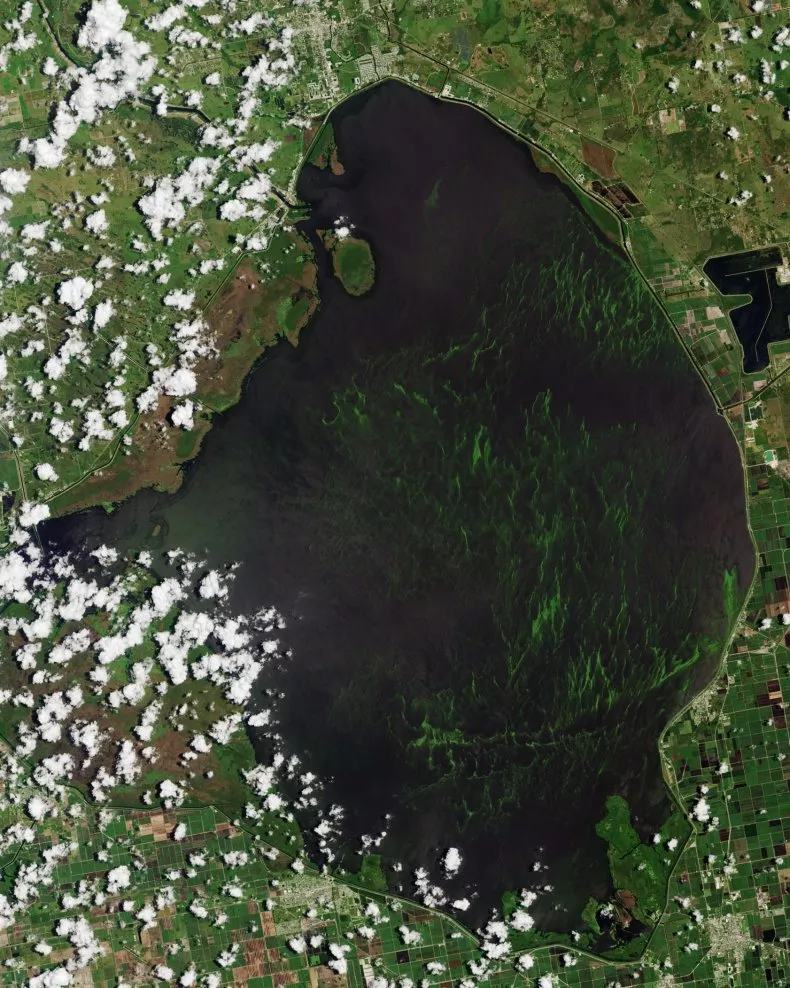



A massive toxic bloom of blue-green algae has erupted across Florida’s Lake Okeechobee, prompting health warnings and closures of parts of a local marina.
As of July 15, the bloom has spread to cover nearly 60 percent of the lake’s surface, raising significant environmental and health concerns.
The algal bloom, which first appeared in May, has grown exponentially, covering approximately 440 square miles of the lake’s total 734-square-mile surface.
The satellite images from NASA’s Operational Land Imager-2 on the Landsat 9 satellite captured the immense scale of the bloom, making it visible even from space.
This outbreak is not the first for Lake Okeechobee, as the lake has faced harmful algal blooms in the past.
Last year, 45 percent of the lake was covered by algae, while in 2018, up to 90 percent of its surface was coated, triggering a state of emergency across seven Florida counties.
Algal blooms occur when micro-organisms called cyanobacteria experience excessive growth and rapid reproduction due to warm water and an abundance of essential chemicals like phosphorus and nitrogen.
These toxic algae can form large, odorous mats and release toxins, including hepatotoxins that target the liver and neurotoxins that affect the nervous system.
Of particular concern is the presence of the toxin microcystin, detected in water samples from Lake Okeechobee on June 17.
This toxin can cause flu-like symptoms such as nausea, vomiting, and diarrhea, along with throat or eye irritation, allergic reactions, and respiratory issues in humans.
Pets and other animals are also at risk of harm or even death from exposure to these toxins.
The algal blooms have far-reaching consequences on the environment as well.
By blocking sunlight, the blooms can hinder the growth of aquatic grasses and adversely affect marine species, including manatees, which rely on seagrass as a primary food source.
In 2021, a high mortality event among manatees was triggered by the disappearance of essential seagrass along Florida’s east coast.
Although the recent bloom in Lake Okeechobee is confined to the lake for now, health officials are urging caution for visitors and residents in the area.
Drinking, swimming, and boating in regions with algae presence should be avoided, and shellfish from impacted waters should not be consumed.
In case of contact with the algae, thorough washing with soap and water is recommended.
Researchers are still trying to understand the factors that trigger more severe blooms in some years than others.
As Florida’s annual rainy season continues, runoff from Lake Okeechobee into nearby waterways may make the situation worse, necessitating a comprehensive approach to address the environmental and health impact of these toxic algal blooms.
Read the original article here:
Newsweek



